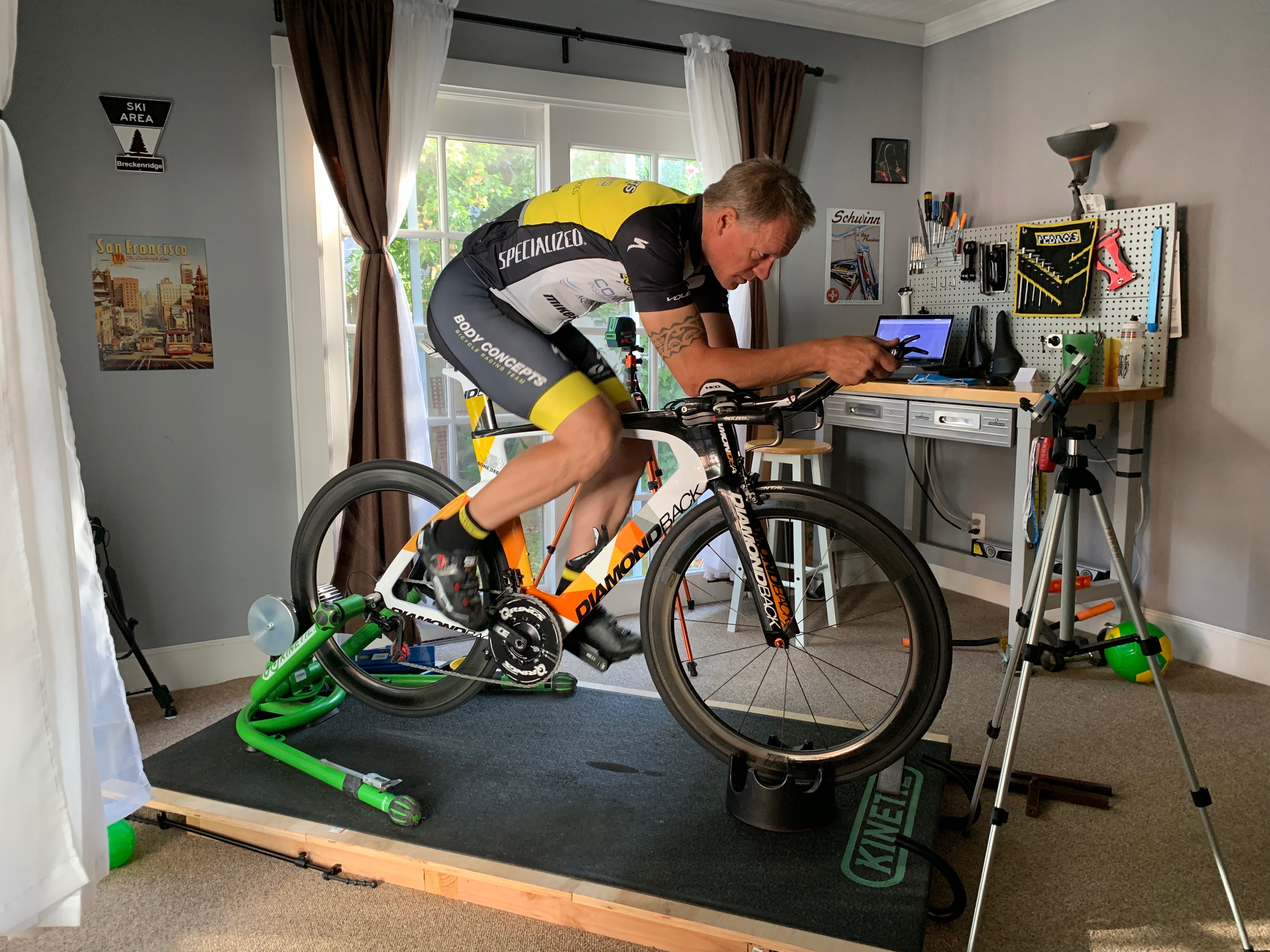The time trial bike is a specialist’s bike – this bike is primarily used in solo efforts on courses (flat to rolling hills) generally ranging from 20 to 40k in distance. The intent of the geometry is to create an aerodynamic position with the sole purpose of delivering speed in an efficient manner. The big questions is how to get into the right position so that the athlete can achieve the greatest speed with the least amount of energy expended.
The athlete in the pic below was previously fit under my process – a process (in a nutshell) that includes measuring the leg, trunk and foot and then comparing those measurements to the geometry of the bike which results in a fit solution containing saddle height, saddle fore/aft, effective body extension cleat alignment and other variables like saddle tilt, handlebar angle, hood placement, shifter lever reach. With the solution in hand, it was time to examine the existing conditions of the bike and then start making changes.
Bike Data
- Brand: Diamondback
- Model: Serios Optum Pro Cycling Team Carbon Time Trial Frameset
- Size: 56cm
- Year: 2013
- Notables: SRM Power Meter
Fit Data
- The first step is to check saddle fore/aft which in this case required a rather sizable adjustment in the fore position (pushing the saddle forward from the centerline: center BB, center downtube and center seat post).
- The next step is to check saddle tilt. The tilt was measured at -1 degree measured from the sweet spot of the saddle. Considering the amount of aero pad drop, the -1 degree tilt was sufficient.
- The third step is to check Saddle height. The height was almost spot on at 905mm however, measuring saddle height on the TT requires examination of the saddle and the method of perch or how and where the athlete is supposed to sit. For example, saddles with lengths at or below 240mm push the athlete towards the nose so the landmark for measuring saddle changes also.
- The fourth step is to check the aero pad drop and elbow angle. Too much drop and the quads can hit the stomach and chest area. The change to the fore/aft repositioned the athlete’s elbow angle to 90 degrees and ensure that placement of the elbow is just of the edge of the aero pad.
- The last check is elbow spacing. The elbows should be position in alignment with the hips. This requires the athlete to pedal at high and low cadence while I assess movement and position of the hips in relation to the elbows.
Conclusion
After a long warm-up on the trainer and multiple hard efforts, I was pleased with the athlete’s position on the bike. I asked the athelte for feedback and based on the changes made he felt that the ability to produce power was greater and that the positioning in the aero pads was more comfortable and required less effort to maintain positioning. The end result of the fit can be seen in the pic below.
